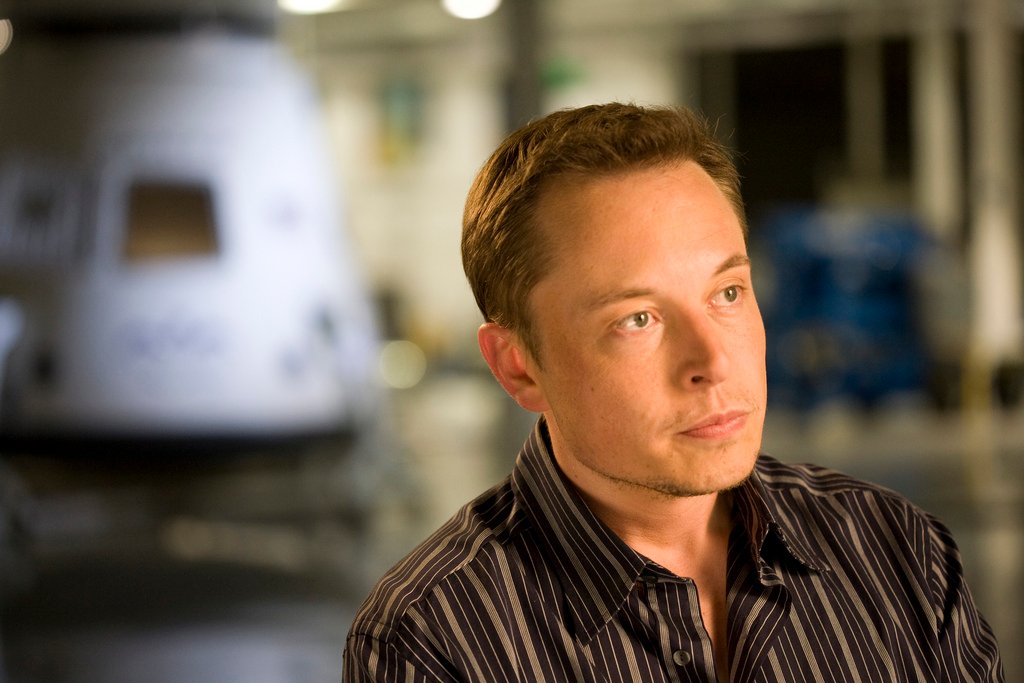
Photo credit: Ononnovation
Elon Musk has always thought big
It wasn't enough for him to just build an electric car - it had to be a super high-performance, top-end. self-driving vehicle. And in order to scale up the production to 500,000 Tesla cars a year, he's putting up the world's largest building to manufacture the batteries, doubling the world's current supply. And in order to charge those batteries, he's bringing SolarCity into Tesla to provide a sustainable supply of clean energy. So Tesla has morphed from a motor company, into an energy company. Perhaps it always has been one.
Similarly with SpaceX, Musk's aerospace company. He's not content to "simply" supply the International Space Station, or deploy satellites - thereby successfully taking on the established giants such as Boeing, Lockheed Martin, and Airbus. For years now he has expressed his long term aim to land people on Mars. SpaceX's technical innoations have often been framed in those terms, such as re-using the booster-stage of Falcon 9 rocket (Reusability: The key to making human life multi-planetary).
Musk’s big pitch: to Mars and Beyond
Yesterday in Guadalajara, Mexico, Musk made his big pitch: a plan to transport to, and settle a million people on Mars. And build a civilisation there. Once again, he's got a much bigger picture in mind: “I really think there are two fundamental paths: One path is we stay on Earth forever, and some eventual extinction event wipes us out.” Mars isn't the end goal either; the spacecraft will be ready for deep-space travel and designed to go anywhere within the solar system.
(BTW, did you notice the Stark-like facial hair?)
This plan hinges on being able to affordably transport the thousands of people and tons of equipment and supplies every year for 40 to 100 years. Musk reckons that with a fully reusable launch system, each rocket could send 450 tons of payload to Mars at a cost of $140,000 per ton. It should cost individual settlers no more then the average house price in the US. This will include a free return trip if the settler wants it - although Musk does concede that the risk of fatality is high.
A HUGE Rocket
The rocket will be HUGE. It will be big enough to carry 100 to 200 passengers, fully equipped to keep them amused during the 80 to 150-day journey. Aboard the 17-meter diameter spacecraft, passengers will wile away their time playing zero-G games, watching movies and bulking up at the on-board pizza shop. Musk is sure this will be “like, really fun to go, you’ll have a great time”. Hmmm...
The 77.5-meter-tall rocket will be powered by 42 Raptor interplanetary transport engines, the first of which was successfully tested this week. The booster should land within 20 minutes and should be almost instantly reusable. This is a must-have since the spacecraft will have to refuel before leaving earth's orbit on the way to Mars.
The entire stack height will be 122-meters. Says Musk: "It's quite big". Yeah.
Can this be done?
I don't know if all this is even feasible - particularly in the 10-years that Musk estimates it could take for the first launch. My view is that this is part of the hype-cycle that Musk is so good at. Of course he doesn't have the money to get anywhere near that first launch - nor does anyone else. But the hype generated by this pitch will draw a lot of attention - both from space-obsessed private investors, to large companies and governments. In order to get the first launch within 15 tears requires a huge amount of funding right now.
Should it happen? I'll cover the issues raised by this plan - such as the possibility of human extinction and if colonising Mars is a worthwhile pursuit - in a later post.
